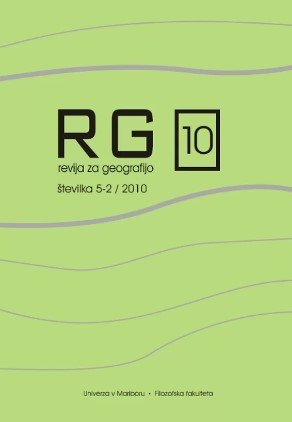Livestock Revolution and Its Impacts on the Sustainability of Marginal and Small Farmers in India: A Case Study
Abstract
Livestock husbandry is an important segment of Indian agriculture. Its share of contribution to agricultural gross products has increased since the implementation of the globalization of agricultural trade. Livestock revolution has occurred not only in India, but in all tropical deve-loping countries, owing to recently increasing demand for animal-derived products in national and international markets. We selected Aligarh, a micro geographical unit from the Upper Ganga plain of Uttar Pradesh for this study. 600 households from 12 villages in the area were surveyed for collection of data. The study revealed that the region witnessed growth in livestock husbandry with selected species during 1993-1994 to 2003-2004. Buffalo and goats showed a positive change due to enhancement in the demand of milk and meat on account of increasing urban consumers, liberalization of agri-business and the changing of food habits over the decades. Cattle numbers have contracted owing to the mechanization of agriculture and the prohibition of cow slaughter in the country. Two thirds of livestock keepers, workers and beneficiaries are poor farmers with less than 3 hectares of land holding. The majority of them follow the livestock-cropping integrated farming system, which is highly beneficial rather than rearing livestock exclusively. Livestock husbandry is an economically viable, socially acceptable and environmentally sustainable farming system in the study area of the Aligarh district.
Downloads
References
Alan, F. 2007: Soil physical Aspects of Integrated Crop-Livestock Systems. Proceeding of Symposium on integrated Crop-Livestock Systems. Curitiba, Brazil.
Allana, I. 2005: Current Scenario and Growth Prospects for Meat and Raising India’s Share in Global Markets. Presented at the Agriculture Summit Vigyan Bhavan, New Delhi.
Delago, C et al 1999: Livestock to 2020-The New Food Revolution. Food, Agriculture and Environment discussion paper. 28 International Food Policy Research institute (IFPRI). FAO, ILRI, p. 83.
Fakoya, E. O. 2007: Utilization of Crop-livestock production systems for sustainable agriculture in Oye state, Nigeria. Journal of Social Science, Vol. 15(1), p. 31-33.
Hoffman, D. 1999: Asian Livestock to Year 2000 and Beyond. FAO, RAP working Paper Series.
Khan, N. et al 2008: Livestock revolution in monsoon Asia during post economic reform period. Asian Profile, Vol.36 (5).
Leonard, D. K. 2006: The Political economy of International development and Pro-Poor Livestock policies. A Comparative Assessment, Pro-Poor Livestock Initiati-ves Working. Paper No. 35, FAO.
Picca, C. U. 2008: Livestock Policy for Poverty Alleviation. Theory and Practical evidence from Africa, Asia and Latin America. Pro-Poor livestock Initiative Working Paper No. 27, FAO.
Ramarao, W. Y. 2005: Crop-Livestock integrated farming system for augmenting socio-economic status of small holder tribal farmers of Chattisgarh in central India. Livestock Research for rural Development, Vol. 17(8), p. 1-3.
Taneja, V. K. 2008: Semi intensive and intensive systems, the future. The Hindu Survey of Indian Agriculture.
Steinfeld, H. et al 2006: Livestock’s Long Shadow. Environmental issues and Options, LEAD/FAO, p. 407.
The World Bank, 2006: Managing the Livestock Revolution. Policy and Technology to Address the negative Impact of Fast Growing Sector. The World Bank Agriculture and Rural development Department. Report No. 32725-GLB, p. 63.
Copyright (c) 2010 Nizamuddin Khan, Asif Iqubal

This work is licensed under a Creative Commons Attribution 4.0 International License.
